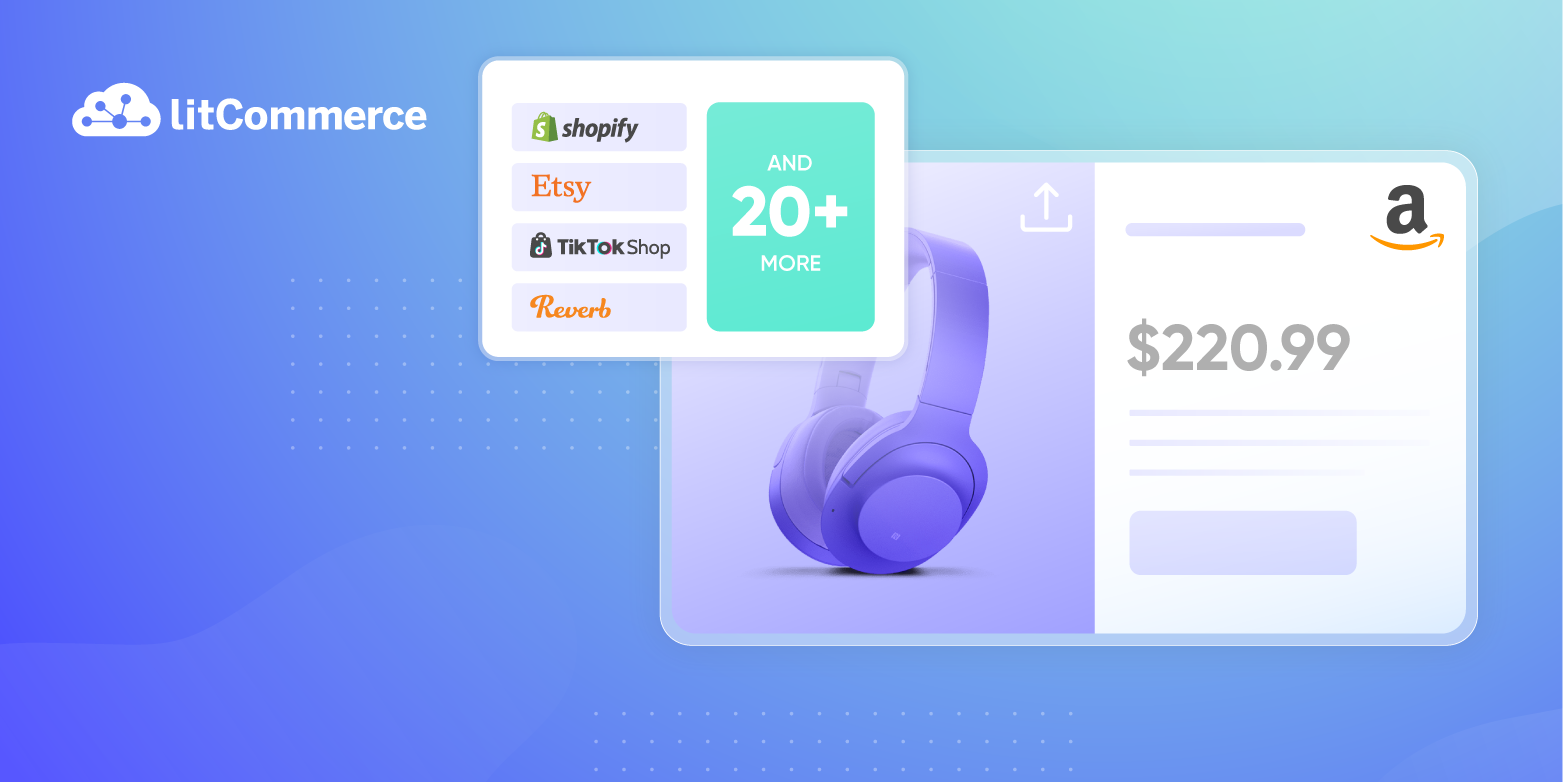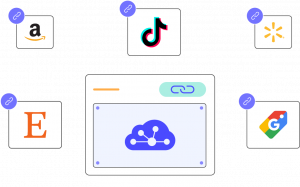Running an eCommerce store can be lucrative. Yet, to make the most of it, merchants must consider many factors, including the best selling platforms to kick off or migrate their online stores.
Speaking of which, if you are seeking your perfect fit among thousands of websites, this is a must-read. LitCommerce is about to reveal over 25+ of the best online selling sites.
Now, let’s wait for no more and get the ball rolling!
Main takeaways from this article:
- Leveraging both marketplaces and eCommerce platforms can maximize reach while balancing brand control and customer ownership.
- Choosing platforms with audiences that match your niche (e.g., Etsy for creatives, Reverb for music gear) can increase conversion rates.
- Multichannel selling reduces dependency on a single platform, as 61% of top Amazon sellers also sell elsewhere.
- Fulfillment services like FBA, WFS, and TikTok Fulfillment can streamline operations but require careful margin planning.
- Mobile-first and social commerce platforms (TikTok Shop, Shopee) are gaining ground, especially with Gen Z and Millennials.
Our expert take: The future favors platform-agnostic sellers who adapt across channels. Social commerce will keep expanding, but owning a branded store is still key for long-term profitability and brand equity.
Sell Everywhere from One Dashboard
LitCommerce helps you list, sync, and manage products across top global marketplaces — all in one easy-to-use platform. Bulk listing, real-time sync, and multichannel control made simple.
Best Selling Platforms Online – Marketplace or Ecommerce Platform
Before diving into the list of 27 best selling platforms for e-retailers, let’s walk through the basics of marketplaces and eCommerce platforms regarding their notions, ways of operation, and different types.
No | Criteria | Online Marketplace | eCommerce platform |
1 | Definition | A platform where multiple sellers list products and sell to a shared customer base. | A standalone store built and managed by the seller. |
2 | Branding control | Limited — branding is secondary to marketplace identity. | Full — complete control over store look, feel, and brand. |
3 | Traffic source | Comes from the marketplace’s existing audience. | Must be generated through marketing, SEO, and ads. |
4 | Setup speed | Fast — setup often takes minutes to hours. | Slower — requires store design and setup. |
5 | Costs | Listing fees, commissions, fulfillment fees. | Subscription fees, hosting, apps, payment fees. |
6 | Pros | Instant access to large audiences, no need to generate traffic. | Full brand ownership, customer data access, flexible customization. |
7 | Cons | High competition, less control over customer relationships. | Requires own traffic generation, higher upfront effort. |
8 | Best for | New sellers, product testing, quick sales. | Established brands, niche businesses, long-term growth. |
9 | Top examples | Amazon, eBay, Etsy, Walmart, TikTok Shop | Shopify, Wix, BigCommerce, WooCommerce, Squarespace |
Best Selling Platforms: 7 Top Online Marketplaces (General + Social Commerce)
Let’s get to our most exciting part! We are about to reveal the best online selling platforms regarding general marketplaces & social commerce. From those for general to niche products, we’ve got them all covered.
Platform | Pros | Cons | Best For |
Amazon | • Massive global reach & brand trust | • High fees and rising costs | Brands needing scale, volume & fulfillment; national/international reach; serious sellers |
eBay | • Huge, global buyer base | • Competition in crowded categories | Collectibles, used/vintage items, SMBs, niche sellers; seeking unique buyers |
Etsy | • Highly engaged, loyal audience | • High competition | Makers/artisans, crafters, custom/vintage sellers; creative and unique products |
TikTok Shop | • Viral, trend-driven sales | • Quality/reputation risk | Brands targeting Gen Z/Millennials, creators, products suitable for video/demo; impulse buys |
Walmart | • No setup/monthly fees | • Lower profit margins, price pressure | Strong value/commodity products; brands with proven performance; US-focused expansion |
Facebook Marketplace | • Free local listings | • Scam risk/unreliable buyers | Casual & local sellers, used/secondhand goods, quick community sales; low cost/no barrier |
Google Shopping | • Free product listings | • Paid ads can be expensive | Brands with own website, DTC e-commerce, paid search expertise; scaling traffic, multi-channel |
1. Amazon
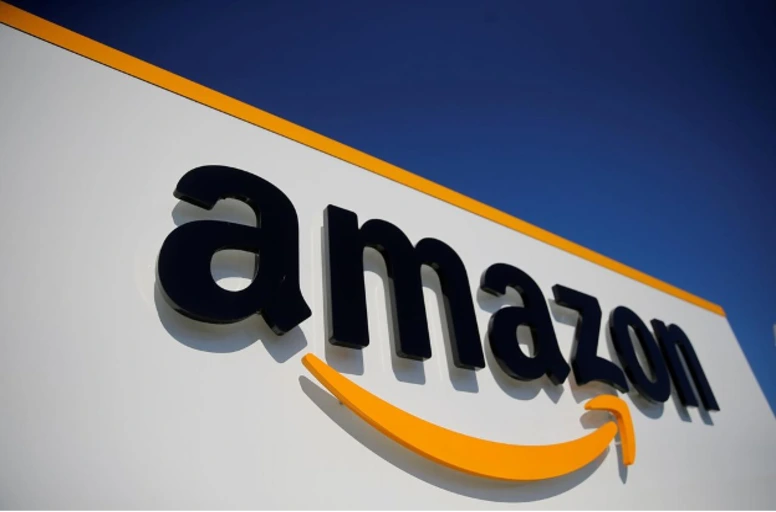
Amazon is the heavyweight champion of online marketplaces. What started as a modest online bookstore has grown into a global retail giant, with over 310 million active buyers and a presence in 50 countries (according to the AMZScout report).
Today, shoppers can find everything from kitchen gadgets and gaming consoles to high-fashion items and everyday essentials — all delivered with the speed and reliability that have become Amazon’s trademark.
One of the biggest draws for sellers is Fulfillment by Amazon (FBA). This service takes care of storage, packing, shipping, and even customer service, leaving sellers free to focus on sourcing products and driving sales.
Combine this with Amazon’s advertising tools — like Sponsored Products and Sponsored Brands — and you’ve got one of the most effective ways to get your products in front of a massive, purchase-ready audience.
PRO TIPS: 61% of Amazon sellers have at least one additional channel. If you don’t want to get surpassed, taking on Amazon integration with more selling platforms might just be the answer!
Amazon fees:
- Subscription fees: $39.99/month for Professional sellers, or $0.99 per item for Individual sellers.
- Referral fees (Commission): Usually 15% of the sale price for most categories, but can range from 8% to 45% depending on category (e.g., jewelry 15%, clothing 5-17%, computers 8-15%).
- FBA (Fulfilled by Amazon) fees: Vary by size/weight—average $3.22 to $5.05 per unit for standard items. Bulky or fragile items may cost more.
- Other fees: Storage fees, long-term storage, optional advertising, and high-volume listing fees.
Benefits of selling on Amazon:
- Massive global customer base
- Reliable fulfillment and shipping services
- Strong advertising tools for promotion
Things to consider:
- High competition, so differentiation is critical
- Selling fees can impact margins
- Limited control over branding and customer relationships
Is Amazon truly worth selling on? Get to know more about the benefits and challenges of this online marketplace with LitCommerce now!
2. eBay
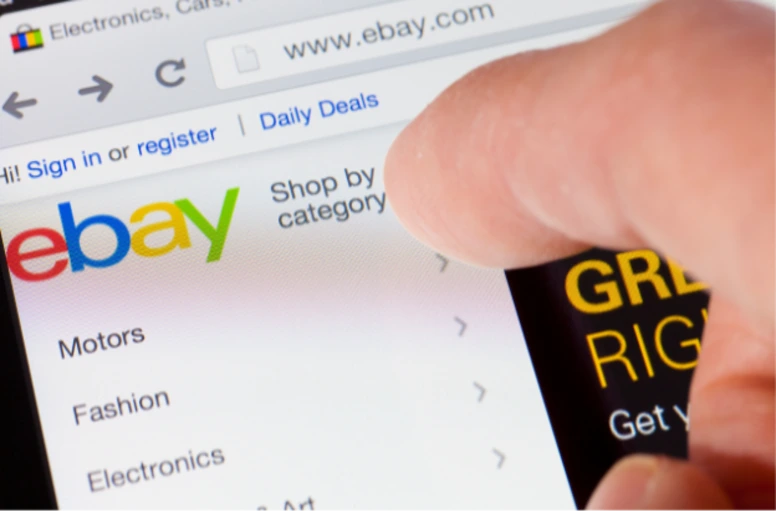
Coming right after Amazon is eBay – our 2nd best selling platform. Known for its versatility, eBay enables sellers to list products in either auction-style or fixed-price formats, making it a great fit for a wide range of items, from rare collectibles to everyday electronics.
With a reach spanning over 190 countries and a well-established buyer feedback system, eBay offers a trusted environment where both buyers and sellers can trade with confidence.
One of eBay’s biggest strengths is its flexibility. You can sell brand-new products, pre-loved items, or bulk inventory to a massive and diverse global audience.
Whether you’re a hobbyist clearing out your attic or a business shifting thousands of units, eBay’s mix of auction and “Buy It Now” convenience gives you options to suit your strategy.
eBay offers various integrations that are beneficial for online merchants, ranging from listing optimization to order management. You may want to review the list of third-party providers briefly. Speaking more of this matter, eBay integration is also one of our most prominent packages for multichannel sellers. Check it out!
eBay fees:
- Listing (insertion) fees: First 250 monthly listings are free, then $0.35 per extra listing.
- Final value fee: 13.25% on most sales (item price + shipping + tax), with some categories ranging 8–15%; plus $0.30 per order.
- Payment processing: Included in the final value fee.
- Performance penalties: 5–6% extra for low-rated sellers.
Benefits of selling on eBay:
- Wide range of categories, from niche to mass-market products
- Choice of auction or fixed-price selling formats
- Buyer feedback system builds trust and credibility
Things to consider:
- High competition requires compelling product listings and competitive pricing
- Fees for listing, selling, and upgrades can impact margins
- Fast shipping and good customer service are essential for maintaining positive feedback
Read our full guide on how to sell on eBay right here!
3. Etsy
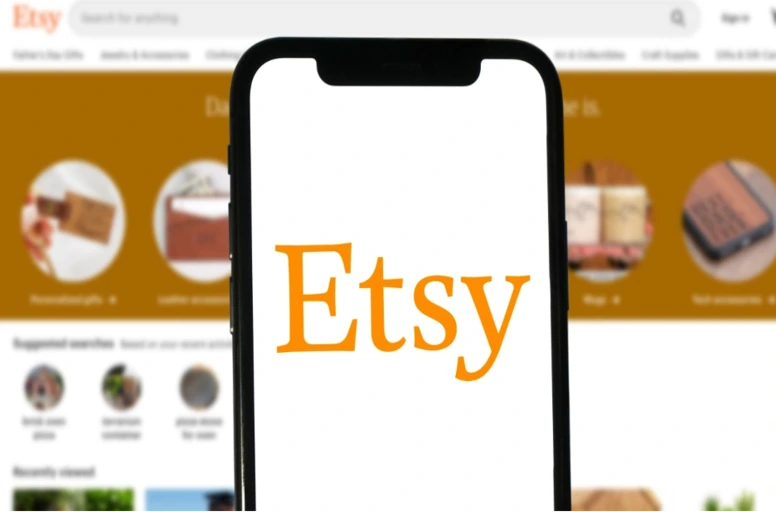
Searching out the next best platform for selling online? Have you ever tried going live on Etsy? Let’s take a further glance at this marketplace!
Etsy has carved out a unique place in the eCommerce world as the go-to marketplace for handmade goods, vintage items, and creative products.
With a community of millions of buyers specifically searching for something unique, Etsy offers sellers a chance to stand out in a way that’s harder to achieve on more general marketplaces. From handcrafted jewelry and custom artwork to digital downloads and one-of-a-kind home décor, Etsy’s audience comes ready to buy, often with a personal story or gift in mind.
What makes Etsy especially attractive is its niche focus and loyal customer base. Buyers here aren’t just browsing; they’re actively looking for distinctive products that can’t be found in big-box stores.
Etsy also offers sellers useful tools like Etsy Plus for enhanced shop features and Pattern for creating a standalone website that still integrates with your Etsy store. Add in built-in advertising options for both on-platform and off-platform promotion, and sellers have a clear path to increased visibility.
Your creative spirit can absolutely thrive on Etsy, but don’t forget about other dynamic channels which can reward you equally. Integrate Etsy with more selling sites now!
Etsy fees:
- Listing fee: $0.20 per item (good for 4 months).
- Transaction fee: 6.5% of the total order price (including shipping and gift wrap).
- Payment processing fee: 3% + $0.25 per transaction for US sellers (varies internationally).
- Optional fees: Advertising, currency conversion, premium tools.
Benefits of selling on Etsy:
- Niche-focused audience with high buying intent
- Strong community and brand reputation for handmade and vintage goods
- Tools for both marketplace selling and independent store building
Things to consider:
- Best suited for unique or creative products, not mass-produced goods
- Fees can add up when combined with advertising costs
- Standing out still requires high-quality photos, branding, and storytelling
Given all this information, can Etsy be your perfect match? Find out more about its pros and cons through our ultimate Etsy review here!
Sell on Every Marketplace Without the Hassle
Stop managing each platform separately. With LitCommerce, you can sync products, inventory, and orders across Etsy, eBay, Amazon, TikTok, and more — all from one smooth, unified system.
4. TikTok Shop
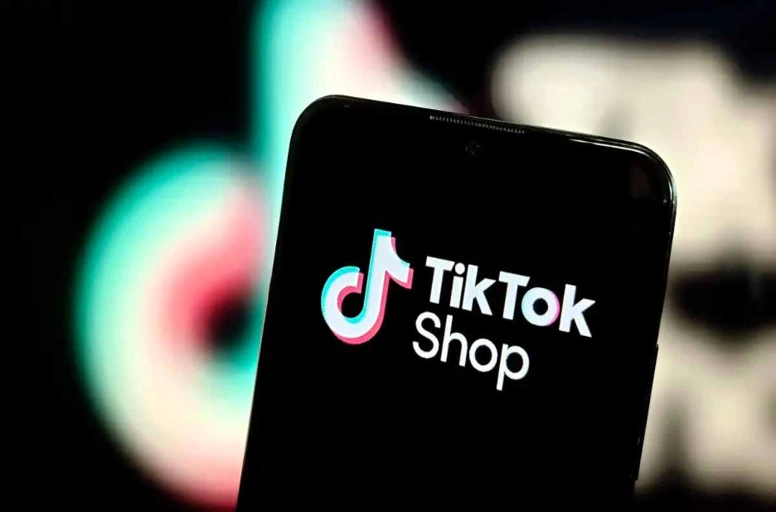
TikTok Shop is one of the newest yet fastest-growing best-selling platforms in the eCommerce space, and it’s already making waves. Launched in 2023, this social commerce platform integrates shopping directly into the TikTok app, allowing sellers to showcase products through short, engaging videos and live streams.
As of early 2025, TikTok has approximately 1.59 billion monthly active users (according to Social Champ) — many of them Gen Z and Millennials. TikTok Shop gives sellers direct access to a young, highly engaged audience that’s ready to discover and buy.
The magic of TikTok Shop lies in its blend of entertainment and shopping. Sellers can create authentic, creative content that reaches potential buyers through TikTok’s powerful recommendation algorithm.
Add in features like in-app checkout and Fulfillment by TikTok, which handles storage, packing, and shipping, and you’ve got a platform built for fast conversions. It’s not just about selling a product — it’s about telling a story that makes people click “buy now.”
It is not only about the buyers, but also the rising seller number. As a matter of fact, TikTok Shop integration package has become one of LitCommerce most popular product after just a short while!
TikTok Shop fees:
- Referral (commission) fee: Standard 6% per order for most products; varies by category, e.g., jewelry 5%, apparel 15%, electronics 8%.
- Transaction/Processing fee: ~2.18–2.9% plus a flat $0.30 per order.
- FBT (Fulfilled by TikTok) fees: $3.58–$5.75 per item, plus storage after 30 days.
So, what exactly got TikTok Shop into this list? Let’s check it out!
Benefits of selling on TikTok Shop:
- Access to a massive, trend-driven audience
- High engagement rates compared to other social platforms
- Seamless in-app buying experience with fulfillment options
Things to consider:
- Best suited for visually appealing, impulse-buy products
- Success relies heavily on consistent, creative content creation
- Trends move fast, so sellers must adapt quickly to stay relevant
If you need a closer glance at TikTok and how it operates, feel free to check out our topic on Is It Worth Selling on TikTok? All Insights in 2025 Revealed!
5. Walmart Marketplace
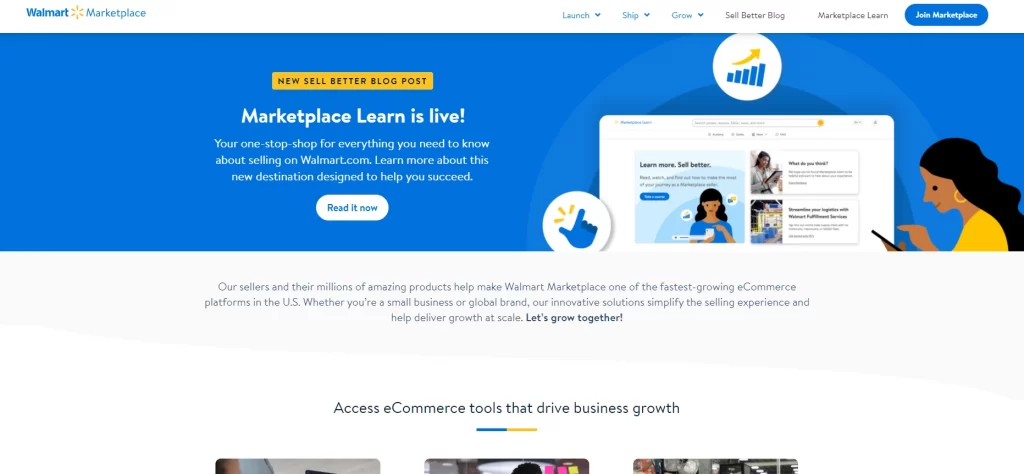
Walmart Marketplace has grown into a serious contender in the eCommerce world, combining the massive reach of Walmart’s brick-and-mortar empire with the convenience of online shopping.
With millions of loyal customers who already shop Walmart for groceries, household items, and everyday essentials, sellers gain access to a built-in audience that trusts the brand.
One of Walmart Marketplace’s strongest advantages is its fulfillment network. Through Walmart Fulfillment Services (WFS), sellers can store products in Walmart’s warehouses and have them picked, packed, and shipped with the same speed and reliability Walmart is known for.
The platform also supports dropshipping and print-on-demand models, giving sellers flexibility in how they run their business. Competitive pricing is key here — Walmart customers expect value, and the platform’s algorithms reward it.
If you want to know deeper about Walmart Marketplace, check out our full review of Walmart Online Marketplace: How to Succeed at Walmart!
Walmart Marketplace fee:
- No monthly or setup fees.
- Referral fee: 6%–15% of sales price, category-based (e.g., apparel/accessories 15%, computers 6%, electronics 8–15%, jewelry 5–20%).
- WFS (Walmart Fulfillment Services): Optional fee for storage/fulfillment, typically 15% less than Amazon; fulfillment starts at $3.45 for items under 1lb.
- Advertising fees: Optional.
Benefits of selling on Walmart Marketplace:
- Access to Walmart’s massive customer base
- Reliable fulfillment services with fast delivery options
- Opportunities for both physical and online-only sellers
Things to consider:
- Highly competitive pricing environment
- Best suited for products with broad, everyday appeal
- Approval process for new sellers can be selective
If you’re considering selling on Walmart, now’s the perfect time to join. With the Walmart New-Seller Savings Program, you can get up to 75% off referral fees, $2,000 in fulfillment credits, and $1,000 in ad credits to accelerate your growth.
It’s a powerful jumpstart for new sellers ready to scale fast. Start selling now.
6. Facebook Marketplace

It’s not just about scrolling anymore! It’s about making a profit right from your Facebook account. Let us now walk you through Facebook Marketplace and the reasons why it became one of the best selling platforms!
Facebook Marketplace has transformed from a simple peer-to-peer selling tool into a thriving platform for both casual sellers and established businesses. With over 3.07 billion monthly active Facebook users, it offers instant access to a massive audience — especially for local sales.
Buyers can search within a set radius (usually up to 100 miles), making it perfect for quick, direct transactions without the need for complex shipping arrangements.
One of the biggest draws is how easy it is to get started. If you already have a Facebook account, you can list items in minutes as a Facebook product feed — no storefront setup or lengthy approval process required. Businesses can also join relevant selling groups to target niche audiences with high buying intent.
And for sellers who want to reach beyond their local area, Facebook Marketplace supports nationwide shipping in certain categories, giving more flexibility in how you sell.
Selling on Facebook Marketplace is hihgly recommended. However, always remember to understand its challenges and opportunities first. Check out LitCommerce’s full reviews of Facebook Marketplace here!
Facebook Marketplace fees:
- Local sales: No fees for in-person/local transactions.
- Shipping sales: 10% commission on sale price for shipped items (minimum $0.80 per listing) as of April 2025. Lower-value items ($8 or under): $0.40 flat fee.
- Payment processing: Included in the commission for local shipping orders.
Benefits of selling on Facebook Marketplace:
- Huge, built-in audience with both local and national reach
- Extremely low barrier to entry for new sellers
- Ability to connect directly with buyers through Messenger
Things to consider:
- Best for quick-turnover items like apparel, accessories, and home goods
- Less structure compared to traditional marketplaces — scammers can be an issue
- Limited branding opportunities for growing long-term recognition
7. Google Shopping
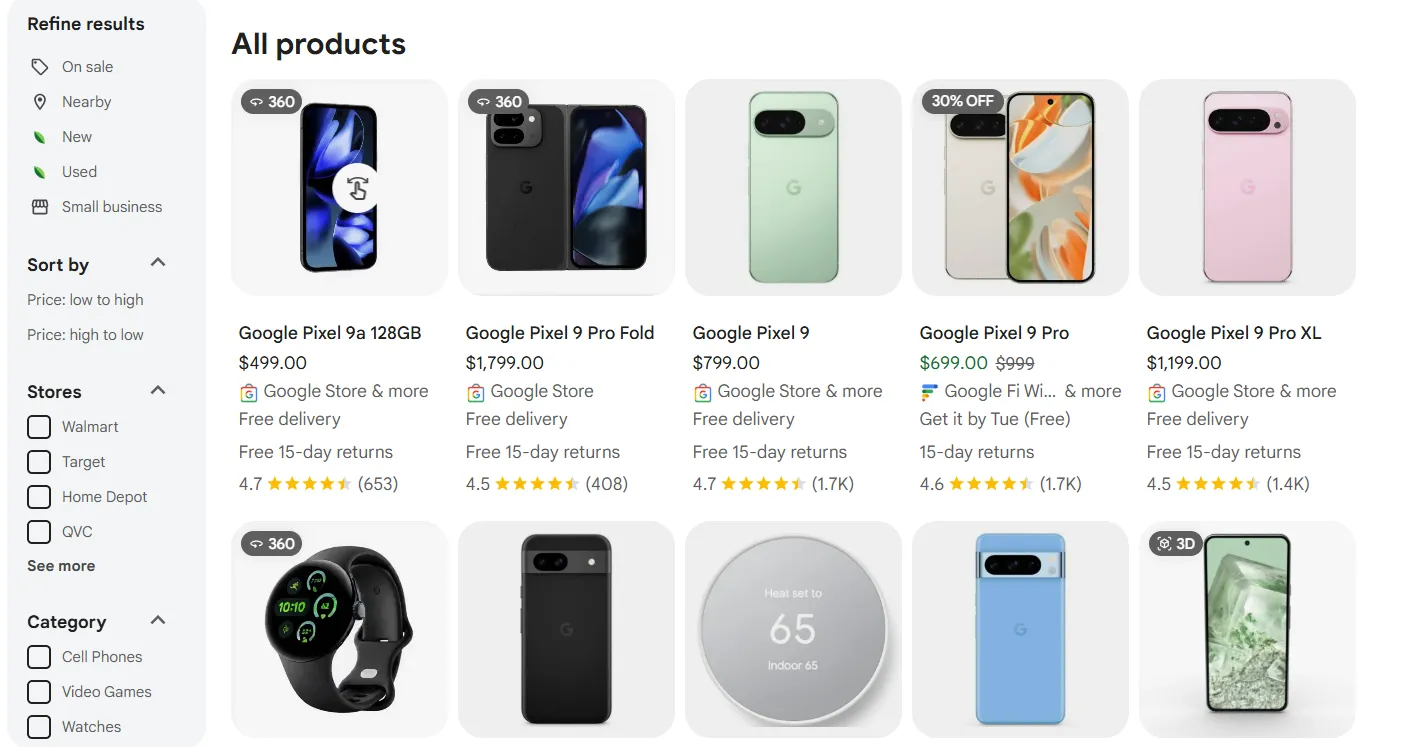
Since its launching in 2002, Google Shopping has arisen from a user-friendly product comparison service into a candidate for the best selling platforms. Currently, it is directly competing with giants such as Amazon or eBay.
Google Shopping has evolved from a simple product comparison tool into a powerful sales channel that competes directly with major marketplaces. Integrated with the world’s most-used search engine, it places your products in front of millions of shoppers actively searching for what you sell. This means your listings can appear right at the top of Google’s results, giving you unmatched visibility to an audience already primed to buy.
One of Google Shopping’s biggest advantages is that it’s free to list products — you only pay if you choose to run paid ads. And with billions of daily searches, the potential reach is enormous.
For certain products and locations, Google also offers same-day delivery, giving it a competitive edge in speed. The platform provides robust analytics tools through Google Merchant Center, helping sellers fine-tune pricing, promotions, and ad spend for maximum ROI.
Google Shopping fees:
- Free product listings: No listing, subscription, or commission fees when using the standard Merchant Center.
- Google Shopping Actions (Buy on Google): Sellers pay a commission, usually 9–15% depending on category (~12% is typical).
- Advertising (“Sponsored” listings): Optional, Pay-Per-Click (PPC) model, typical cost-per-click $1–2 in most industries—no fees unless you run paid ads.
Benefits of selling on Google Shopping:
- Massive reach via the Google search network
- Targets shoppers with high purchase intent
- Detailed performance tracking and analytics
Things to consider:
- Works best for sellers with a budget for advertising
- Highly competitive keyword bidding environment
- Not ideal for one-off, niche, or low-demand products
Get to know more about Google Shopping with LitCommerce through our detailed Google Shopping analysis!
Smarter Product Feeds for Facebook & Google
Easily promote your products on Facebook and Google Shopping with LitCommerce’s Product Feed Management tool. Automate updates, optimize listings, and reach more shoppers with less effort.
Best Selling Platforms: 11 Top Specialty/Niche Marketplaces
If you’re looking to tap into highly targeted audiences, specialty and niche marketplaces can be a goldmine. These platforms focus on specific product types or buyer interests, making it easier to connect with customers who already know what they want.
Here’s a closer look at 11 top niche marketplaces that can help you sell smarter, not harder.
Platform | Pros | Cons | Best For |
Shopee | Massive user base in SE Asia; affordable fees; mobile-friendly; easy setup; integrated marketing tools; competitive pricing; lots of categories | Intense competition; multiple selling fees; limited global reach; less brand customization | Sellers targeting Southeast Asia, fast-moving consumer goods, bargain hunters |
Wayfair | Millions of items; competitive pricing; easy online setup; free shipping over $49; strong customer service; focused on home-focused audience | Delivery costs for large items; returns can be tricky; no warranty; no showrooms; overstocked inventory can make navigation hard | Brands/sellers in home goods, furniture, decor looking for major US audience |
Wish | Very simple to set up; low upfront fees; huge international reach; flexible payment and advertising; frequent flash sales | High commission fees (up to 15%); lower sales and shrinking user base; listings restricted by category/tier; lower product quality perception | Low-cost items, trend/fashion products, global audience seeking cheap deals |
Mercari | Flat 10% fee; free listings; user-friendly mobile app; strong seller protection; instant pay option; smart pricing; decent buyer base US/Japan | Smaller audience than eBay/Amazon; must wait for rating before funds; no international shipping; limited product categories (mainstream only) | US/Japan based sellers, hot/popular categories (fashion, home, gaming), casual declutterers |
NewEgg | Strong electronics/tech reputation; reasonable commission (8–15%); direct page customization; niche audience for tech; wide selection | Lower reach than Amazon; shipping can be unreliable; mixed customer service; limited categories outside electronics | Electronics, computer parts, tech businesses and individuals seeking targeted buyers |
Poshmark | Unlimited free listings; flat fees; fashion-focused community; simple shipping via prepaid label; live selling options; bundled sales easy | US-only; high commission (20% >$15, $2.95 <$15); fewer business sectors; only for select categories | Fashion/apparel sellers, secondhand and boutique brands, US-focused resale |
OnBuy | Competitive low fees (5–9%); growing UK base; no listing fees; level playing field with no direct competition; good seller support | Smaller audience than Amazon/eBay; fewer seller tools; payment processing fees; low brand recognition | UK sellers, broad categories but best for value-focused/price-competitive sellers |
Reverb | Low capped selling fee (5% max $500); niche-focused (music gear); strong seller/buyer protections; easy listing; secure payment; global reach | Niche buyer audience (only music/instruments); competition in popular gear; shipping costs for bulky items | Musical instrument and gear sellers, boutique music brands, used/vintage gear |
Bonanza | Very low fees; pay only if you sell; easy integration with other platforms; simple setup; ad flexibility; strong community | Low site traffic; weak brand recognition; limited marketing/promotion; buyers/sellers may not know platform | Indie sellers, niche sellers wanting cross-listing, those with stores elsewhere |
Ruby Lane | Dedicated vintage/antiques focus; curated/authentic listings; loyal audience willing to pay more; good sales data; unlimited listings | Smaller audience; $25–$45 monthly fee; strict listing standards; more work per listing | Vintage, jewelry, art/antiques, sellers with high-quality collectible goods |
eBid | Ultra-low fees (max 3%); free listings for Pro; global reach; easy import from eBay; flexible formats (auction/buy now); strong community | Very small buyer base; limited brand recognition; outdated interface; fewer marketing/integration tools; slower sales | Collectibles, vintage, hobbyist, global or niche sellers prioritizing cost-saving over traffic |
1. Shopee
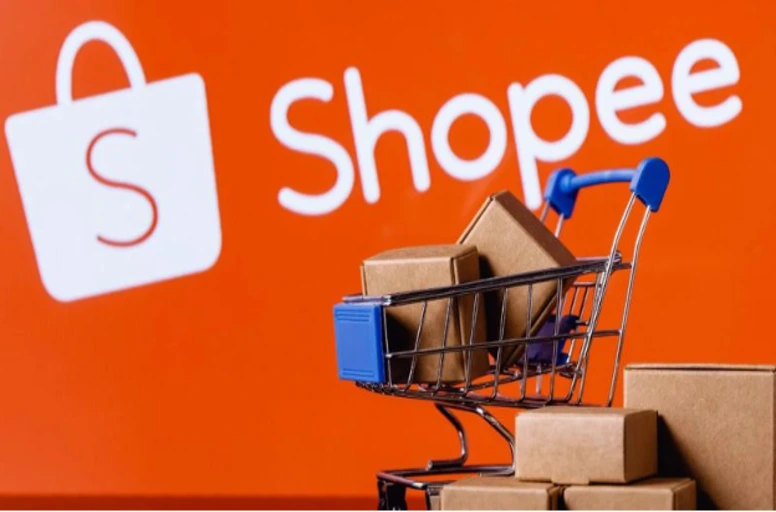
Shopee is a well-known online selling site in Southeast Asia with a variety of products. The platform first launched in 2015 and gained significant success later in its operating countries. Are you curious why it rose to being one of the best selling websites in Asia? We’ll get to the rationale just now!
Known for its user-friendly app and region-specific approach, Shopee tailors its features, payment methods, and shipping options to each country it operates in, making the buying and selling experience seamless. Whether you’re listing electronics, beauty products, fashion, or home goods, Shopee’s marketplace is designed to handle both casual C2C transactions and full-scale B2C operations.
What sets Shopee apart is its focus on mobile commerce and social shopping. Flash sales, vouchers, and interactive features like Shopee Live keep users engaged and ready to buy, while its marketing campaigns — often featuring celebrity ambassadors — help drive massive traffic.
For sellers, the platform offers tools for analytics, advertising, and easy store management, making it accessible even for beginners.
Shopee fees:
- Commission fee: Typically ranges from 2–7.63%, depending on seller tier and country. Example: Non-Mall sellers in Singapore pay a 7.63% commission + 3.27% transaction fee (11%). Shopee Mall sellers (premium tier) may pay 4–6.36% in commission.
- Transaction fee: In Malaysia, 3.78% of the total buyer-paid amount, including an 8% SST (sales tax).
- Fixed platform/support fees: RM0.50 per order post July 2025 (Malaysia).
- No listing fees. Optional program fees for marketing campaigns, cashback, and free shipping.
Benefits of selling on Shopee:
- Large, highly engaged mobile-first audience in Southeast Asia
- Flexible for both casual sellers and established businesses
- Strong promotional tools and in-app marketing features
Things to consider:
- Competitive pricing is key to standing out
- Region-specific policies mean you’ll need to adapt to each market
- Best suited for sellers targeting Southeast Asian customers
1. Wayfair
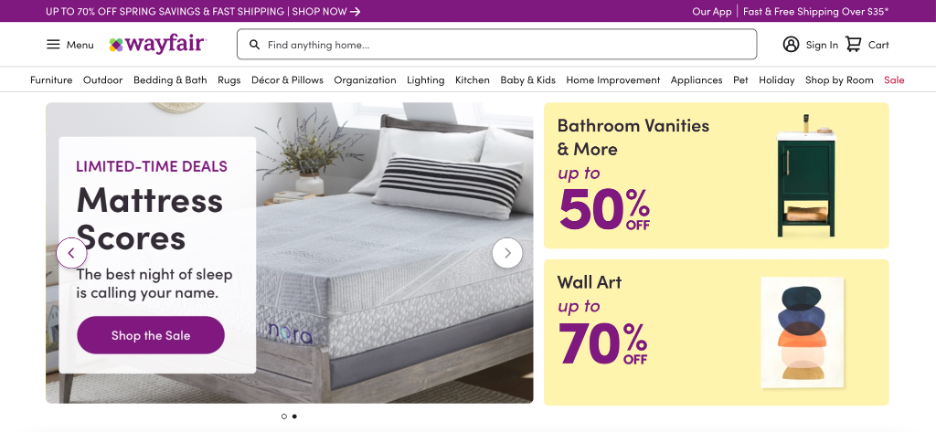
Wayfair has established itself as one of the largest online destinations for furniture, décor, and home goods.
With millions of active customers across the US, Canada, and parts of Europe, it’s a go-to platform for shoppers looking to furnish or refresh their living spaces. The marketplace caters to a wide range of styles and budgets, giving sellers the chance to showcase everything from affordable décor accents to high-end designer pieces.
What makes Wayfair stand out is its seamless shopping experience and focus on home-related products. As a seller, you can tap into a highly targeted audience that’s already in the buying mindset for furniture, lighting, rugs, and more.
Wayfair also provides robust logistics support, including shipping solutions and customer service, ensuring that orders are fulfilled smoothly. With its massive product catalog and curated categories, your items can reach customers who are actively searching for exactly what you offer.
Wayfair fees:
- No direct selling/commission fees. Sellers provide a wholesale price to Wayfair; Wayfair sets retail pricing and pays sellers a set amount per item sold.
- Monthly/Listing fees: None.
- Fulfillment and shipping charges: Seller must consider logistics cost when pricing.
Benefits of selling on Wayfair:
- Highly targeted audience in the home and décor niche
- Strong logistics and fulfillment support
- Opportunity to reach millions of design-conscious buyers
Things to consider:
- Exclusively for furniture and home-related products
- Competition can be strong in popular categories
- Requires reliable inventory and shipping to meet customer expectations
3. Wish

Wish is a mobile-first marketplace that has built its reputation on offering budget-friendly products and exciting deals to a global audience. Popular in over 40 countries, it’s known for its “discovery shopping” experience, where users browse through an endless feed of items — from gadgets and fashion to quirky novelty goods — often at deeply discounted prices.
This treasure-hunt style of shopping keeps buyers engaged and coming back for more.
For sellers, Wish offers direct access to a price-sensitive audience that’s open to exploring new brands and products. The platform is especially strong for secondhand, overstock, and low-cost items, making it an excellent outlet for quickly moving large volumes.
With features like Wish Express, sellers can also highlight faster delivery times to boost trust and conversions. Plus, Wish’s partnerships with various eCommerce solutions make integration and management straightforward.
Wish fees:
- Commission fee: Up to 15% of total order value (including shipping); exact percentage varies by seller tier, category, and region.
- Transaction fee: $0.30 per item/order.
- Listing fees: Free up to your tier’s threshold (e.g., Gold = 1,000 active listings, Platinum = 2,000), then $0.15–$0.35 per listing per month above.
- No subscription or monthly account fees.
Benefits of selling on Wish:
- Global reach through a mobile-first platform
- Engaged audience seeking bargains and impulse buys
- Wish Express option for faster delivery and better visibility
Things to consider:
- Best suited for low-cost or high-volume products
- Quality control is essential to avoid negative reviews
- Margins can be slim due to competitive pricing expectations
4. Mercari
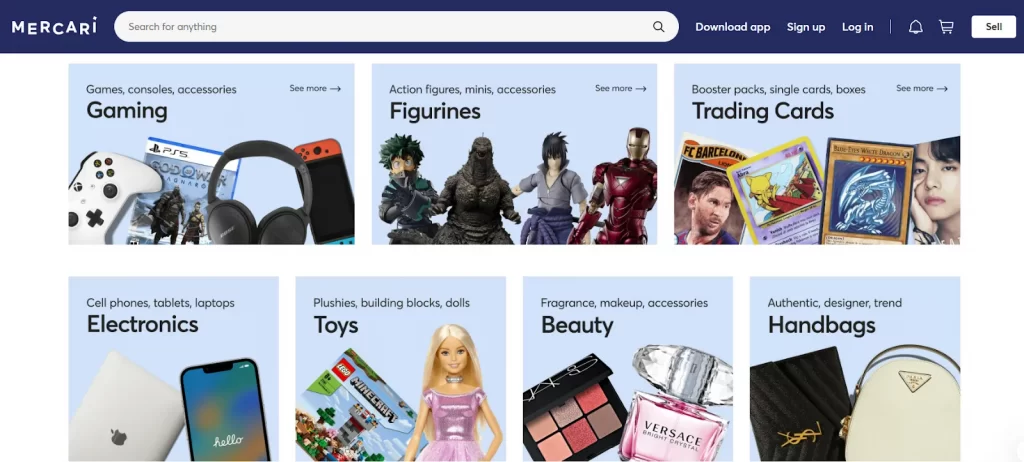
Mercari is a user-friendly marketplace designed for quick and easy selling of almost anything — from clothing and electronics to collectibles and home goods.
Originally launched in Japan and now popular in the US, Mercari appeals to casual sellers and small businesses alike with its simple listing process and built-in shipping solutions. Its mobile-first approach makes it easy to snap a photo, set a price, and start selling within minutes.
One of Mercari’s biggest draws is its flexibility. You can sell new or pre-owned items without the need for a storefront, and the platform handles much of the logistics with prepaid shipping labels and nationwide delivery options.
For sellers looking to clear out inventory or reach a broad, general audience, Mercari offers a straightforward, low-barrier way to make sales without heavy upfront investment.
Mercari fees:
- Selling fee: Flat 10% fee applied on the total of item price plus any buyer-paid shipping.
- Listing fees: None; listing is always free.
- Buyer protection fee: Buyers pay 3.6% of item price + shipping.
- Withdrawal fees: Free for direct deposit; $2 for failed withdrawal. Optional “Instant Pay” for $3 per transaction.
5. NewEgg
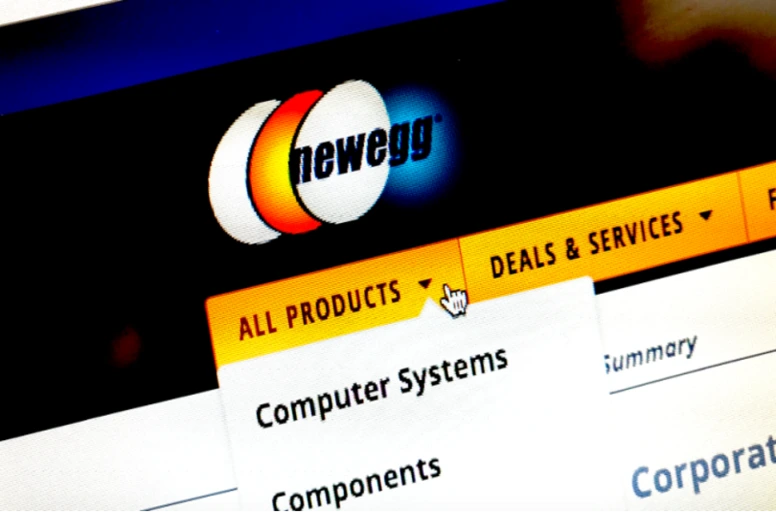
Newegg is the marketplace for tech lovers. It’s where you’ll find everything from computer components to the latest gadgets. If you’re selling electronics, this is the place to be. Newegg attracts serious tech buyers who know exactly what they want.
Newegg’s Fulfillment by Newegg (FBN) program makes selling easier by handling storage, packing, shipping, and customer service. This frees up sellers to focus on growing their business. The platform also offers powerful tools to help you manage listings and track performance.
Newegg fees:
- Selling commission: 8–15% depending on category (e.g., Electronics: 10%, Apparel: 15%, Appliances: 12%, Video Consoles: 8%).
- Membership fees: Basic (Non-Elite): $0.49 per item sold; Professional: $29.95/month (up to 25,000 items); Enterprise: $99.95/month (unlimited).
- No listing fees for all categories.
Benefits of selling on Newegg:
- Highly targeted audience focused on electronics and tech products
- Fulfillment services that streamline shipping and customer service
- Strong brand recognition and trust in the tech community
Things to consider:
- Primarily suited for tech-related products — not for general merchandise
- High competition in popular categories like computer components
- Requires a solid understanding of tech products and features for successful listings
6. Poshmark
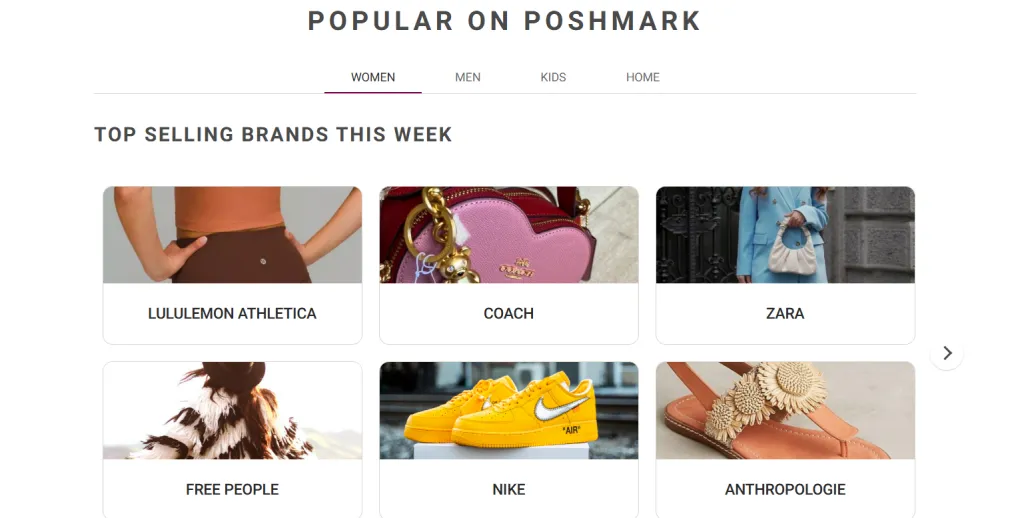
Poshmark is the ultimate social marketplace for fashion lovers. It’s where you can sell new or gently used clothing, shoes, accessories, and even home décor. Poshmark’s community-driven platform makes it easy to build a following and connect with buyers who are passionate about fashion.
What sets Poshmark apart is its social selling aspect. Sellers can follow each other, share listings, and host “Posh Parties” to promote products. This creates a sense of community and helps sellers boost their visibility. Poshmark also takes care of shipping with a prepaid label, so sellers don’t have to worry about logistics.
Poshmark fees:
- Commission fee: 20% of sale price for items $15 and over; flat $2.95 fee for items under $15.
- Listing fees: None.
- Shipping fee: Paid by buyer ($8.27 per order for items up to 5 lbs); sellers can offer a discount, which comes out of earnings
Benefits of selling on Poshmark:
- Strong, engaged fashion community
- Easy shipping with prepaid labels
- Social selling tools to increase visibility
Things to consider:
- Best for fashion, accessories, and home décor
- High commission rate on lower-priced items
- Success depends on active participation in the community
7. Onbuy
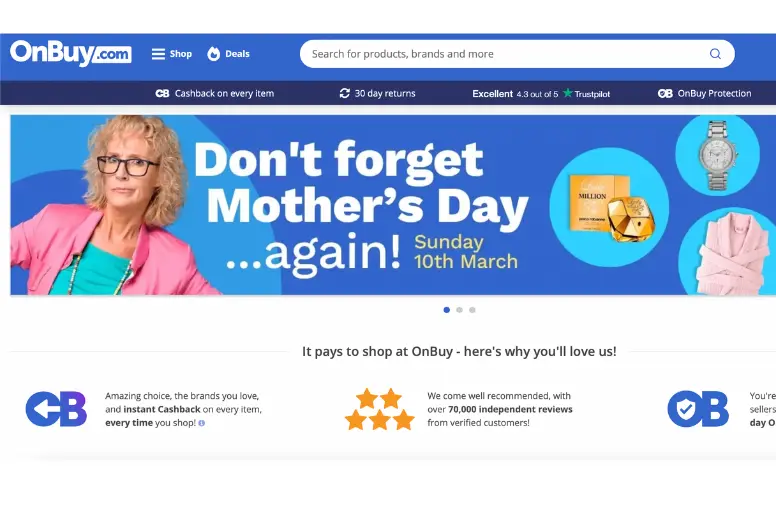
OnBuy is a rising star in the eCommerce world, primarily focused on the UK market. It’s designed to help sellers reach a wide range of customers with competitive pricing and minimal fees. With millions of monthly visits, OnBuy offers a promising alternative to more established platforms.
What makes OnBuy stand out is its commitment to providing fair and transparent fees. Unlike other marketplaces, OnBuy doesn’t charge any listing fees or monthly store fees. Plus, it offers PayPal instant payouts, giving sellers faster access to their funds. The platform is growing quickly, offering both domestic and international selling opportunities.
OnBuy fees:
- Subscription fee: £25/month (Standard), £69 (Partner), £249 (Professional).
- Commission fees: Vary by category: 5–20% (e.g., Consumer Electronics: 5–7%, General merchandise: typically 9–15%, Jewellery: up to 20%). Minimum per-sale fee £0.25.
- No listing fees. Unlimited product listings included with subscription
Benefits of selling on OnBuy:
- Competitive pricing and transparent fee structure
- No upfront listing or setup fees
- Instant PayPal payouts for fast access to earnings
Things to consider:
- Primarily UK-focused, though expanding internationally
- Still growing, so traffic may not match the bigger players yet
- Best for competitive products with good pricing
8. Reverb
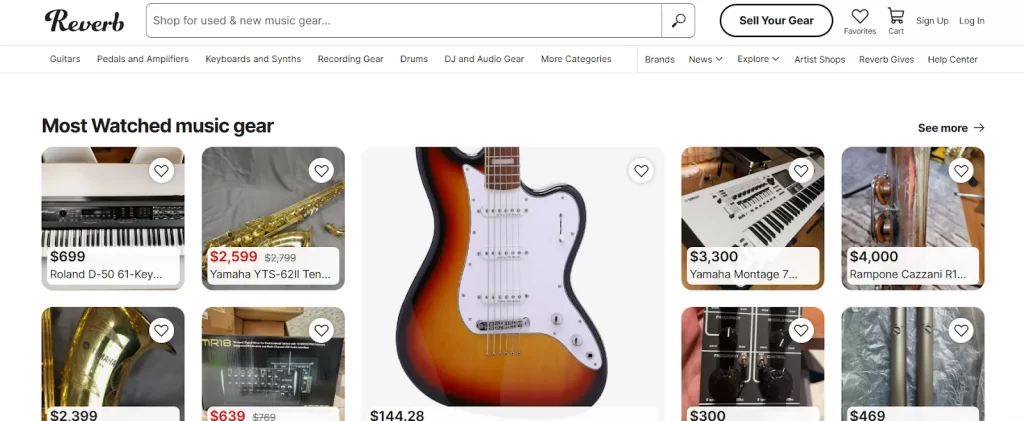
Reverb is the go-to marketplace for musicians and gearheads alike. Specializing in musical instruments, audio equipment, and accessories, Reverb caters to a passionate community of buyers and sellers looking for everything from vintage guitars to new pedals and audio gear. If you’re in the music business, Reverb is the place to be.
What makes Reverb stand out is its niche focus. Unlike general marketplaces, Reverb’s audience is full of high-intent buyers specifically seeking musical gear. Whether you’re selling used instruments or brand-new equipment, this platform gives you access to a dedicated and knowledgeable community. Reverb also offers seller-friendly tools like promotional features and detailed performance analytics to help boost your sales.
Reverb fees:
- Selling fee: 5% on total transaction (item price + shipping); maximum fee $500 per sale.
- Payment processing fee: 2.7–3.49% + $0.25–$0.49 per transaction (depends on method: Reverb Payments or PayPal).
- Listing fees: None; optional promotional “bump” fees for increased visibility.
Benefits of selling on Reverb:
- Strong community of musicians and gear enthusiasts
- Targeted audience for musical instruments and accessories
- Tools to help you track and promote your products
Things to consider:
- Best for musical instruments and gear
- Smaller audience compared to larger, general marketplaces
- Competition can be fierce for high-demand items
If you’re already selling music gear online or thinking about expanding to Reverb, LitCommerce makes the process a lot smoother. The Reverb integration helps you connect your store with Reverb so you can manage listings, inventory, and orders in one place. It’s a simple way to keep everything in sync without bouncing between platforms.
9. Bonanza
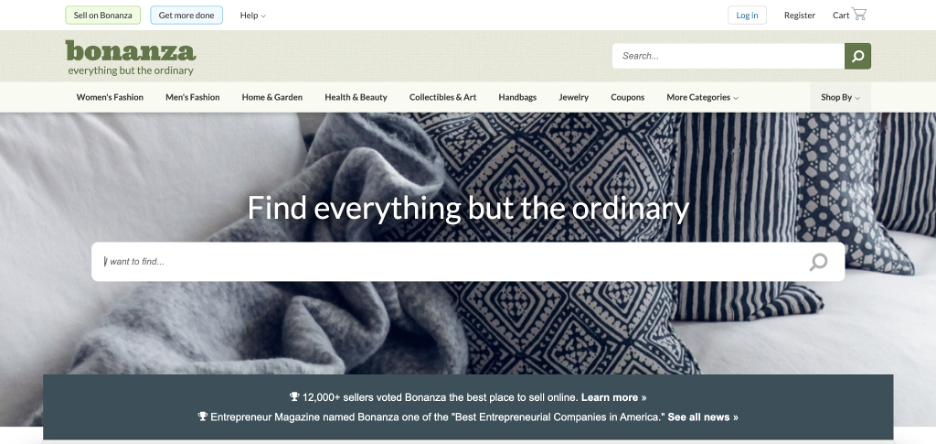
Bonanza is a hidden gem for those looking to sell unique or niche products. Often compared to eBay and Etsy, it’s a marketplace where you can list just about anything — from fashion and home goods to collectibles and rare finds. With a growing community of buyers, Bonanza provides an easy-to-use platform for sellers who want to showcase their one-of-a-kind products.
What makes Bonanza stand out is its low fees and straightforward listing process. Sellers can list products without paying any upfront fees and only pay a small fee when a sale is made. The platform also integrates seamlessly with other eCommerce sites like Shopify, allowing sellers to expand their reach across multiple channels. If you’re looking for a place to list creative or niche products, Bonanza could be a great fit.
Bonanza fees:
- Final value fee: 11% of Final Offer Value (item sale price + shipping/portion exceeding $10), increased as of May 2025. For amounts over $4,000: 1.5% applies beyond that.
- Transaction fee: $0.25 per sale (for non-members).
- Listing fee: $0.03/item/month after first 50, capped at $20/month.
- Membership plan: Optional subscriptions for lower fees and perks.
- Account setup fee: $14.99 for new sellers.
Benefits of selling on Bonanza:
- Low fees and no upfront costs
- Easy integration with other platforms like Shopify
- Great for unique and niche products
Things to consider:
- Smaller audience compared to larger marketplaces like eBay or Amazon
- Best for creative or niche products rather than mass-market items
- Limited built-in marketing compared to major players
10. Ruby Lane
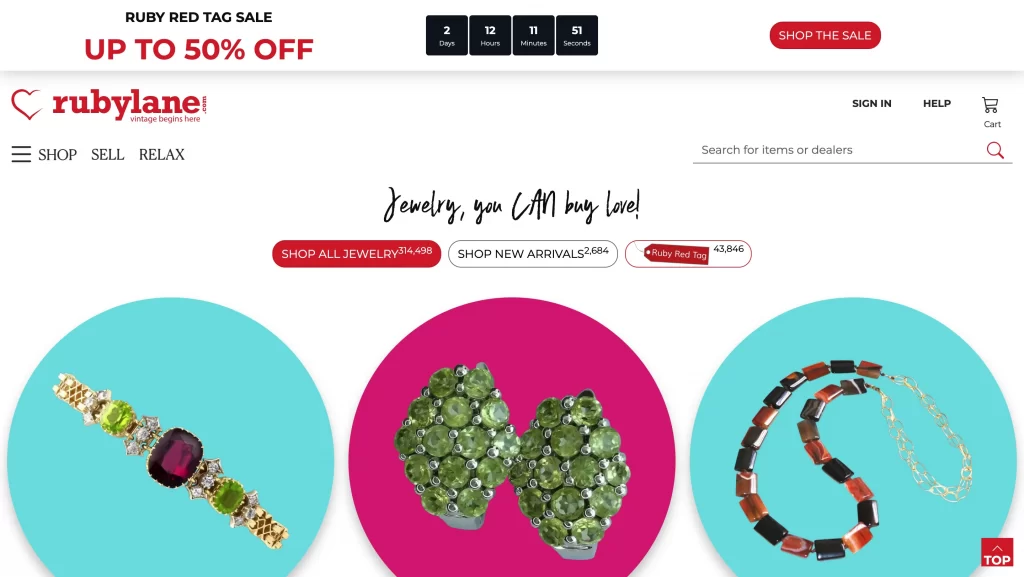
Ruby Lane is the premier online marketplace for vintage, antique, and artisan goods. Specializing in high-end collectibles, fine art, jewelry, and antiques, Ruby Lane caters to a dedicated audience of collectors and enthusiasts.
If you’re selling rare items or unique vintage finds, Ruby Lane is the ideal platform to reach buyers who appreciate the value of history and craftsmanship.
What sets Ruby Lane apart is its focus on quality and authenticity. Unlike general marketplaces, Ruby Lane requires sellers to meet specific criteria, which ensures that buyers can trust they’re getting genuine, high-quality items.
The platform’s curated approach helps sellers stand out in a market where authenticity is key. With a clean, visually appealing interface and an active community, Ruby Lane provides a boutique-style experience for both sellers and buyers.
Ruby Lane fees:
- Monthly shop fee: $45/month (unlimited items).
- Service fee (Commission): Tiered:
- 9.9% on sale up to $2,500/item
- 5% on additional amount over $2,500 up to $7,500
- 2.5% over $7,500
- No listing fees.
Benefits of selling on Ruby Lane:
- Focused, high-intent audience of collectors and vintage lovers
- Curated platform for high-quality items
- Great for rare, unique, and high-end products
Things to consider:
- Best for vintage, antique, and artisan goods
- Higher fees compared to general marketplaces
- Requires strict listing standards and item authenticity
11. eBid

The final name of the second secrion is eBid. It is one of the most budget-friendly selling sites, offering a global marketplace where sellers can list items for auction or fixed price. While it may not have the same level of traffic as the bigger players, eBid’s low fees and simple structure make it an attractive option for sellers looking to keep costs down.
Whether you’re clearing out inventory or selling unique items, eBid provides a straightforward platform to reach buyers from around the world.
What makes eBid stand out is its competitive fee structure. Unlike other platforms that charge hefty commissions, eBid offers a much lower fee per sale, allowing sellers to retain more of their profits.
With a global reach and the ability to list items in multiple categories, it’s an ideal platform for cost-conscious sellers looking to expand their presence without breaking the bank.
eBid fees:
- Selling fees: 0–3% of sale price, depending on seller package.
- Free for buyers; Silver/GOLD membership for sellers includes lower rates.
- Listing fees: Free to list.
- Subscription plans: GOLD members pay a one-time fee (varies by country), which includes access to fixed price and auction formats, plus optional upgrades/visibility.
Benefits of selling on eBid:
- Extremely low fees compared to larger marketplaces
- Flexible auction and fixed-price listing options
- Global reach, with no listing fees for most categories
Things to consider:
- Smaller audience compared to giants like eBay and Amazon
- Success depends on active participation and consistent listings
- Limited built-in traffic and marketing support compared to larger platforms
Best Selling Platforms: Top 9 Hosted & Open-Source Ecommerce Platforms to Build Website Online
In the next part, we will cover the top eCommerce platforms, including the 5 best hosted eCommerce platforms, and 4 open-source platforms.
Some key takeaways:
- If you want predictable monthly costs with excellent international support: Shopify, Wix, BigCommerce
- For maximum control and lowest base cost (but more complexity): WooCommerce, PrestaShop, OpenCart
- For simple artist/small business use: Big Cartel
- For advanced enterprise/large sales: Adobe Commerce (Magento) or BigCommerce Enterprise
- For all platforms, major payment processor fees (e.g., Stripe, PayPal: 2.7–2.9% + $0.30 per transaction) apply and can be the largest variable cost if you have high sales volume.
1. WooCommerce
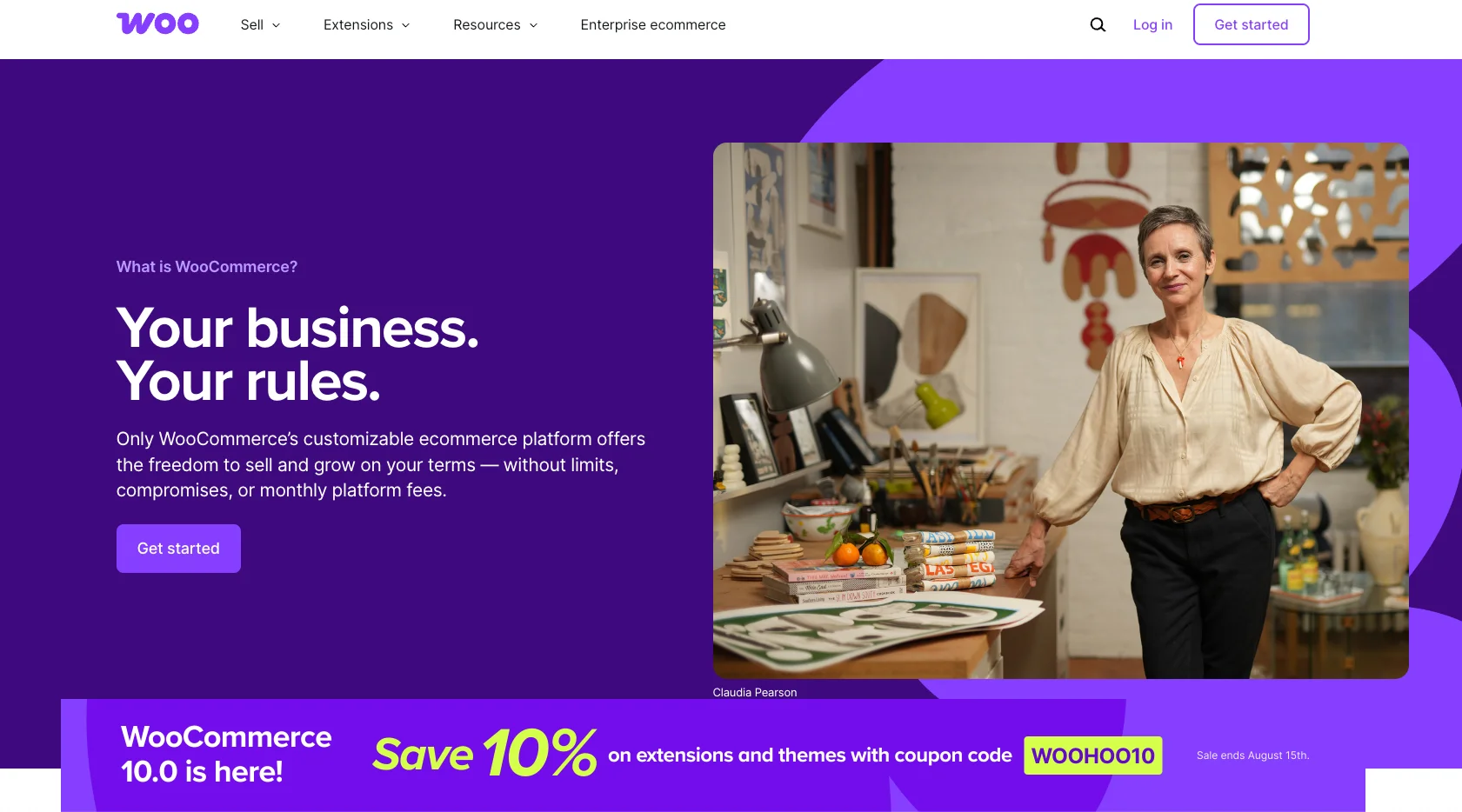
WooCommerce is a free, open-source plugin that turns any WordPress site into a powerful online store. It’s a favorite for sellers who want full control over their website’s design and features — without being tied to a hosted platform.
What makes WooCommerce stand out is its endless customization options. Thanks to thousands of WordPress plugins and themes, you can tweak everything from product pages to checkout to fit your unique style. It supports tons of payment gateways and works smoothly with marketing, SEO, and inventory tools. Keep in mind, though, that because it’s self-hosted, you’ll need some technical know-how or a developer’s help to get the most out of it.
WooCommerce fees:
- The plugin is free to use
- Hosting costs typically range from $5 to $60 per month
- Payment processing fees with WooPayments: 2.9% + $0.30 per US transaction; 3.9% for international cards
- Additional costs for premium themes, extensions, and domain registration
Benefits of selling on WooCommerce:
- Total control over your store’s look and functionality
- Huge selection of plugins and themes for customization
- Ideal for bloggers, content creators, and growing businesses
WooCommerce is perfect if you want flexibility and don’t mind handling the technical side of things to create a store that’s truly your own.
Learn more about this open-source solution through our newly updated analysis of WooCommerce!
2. Shopify
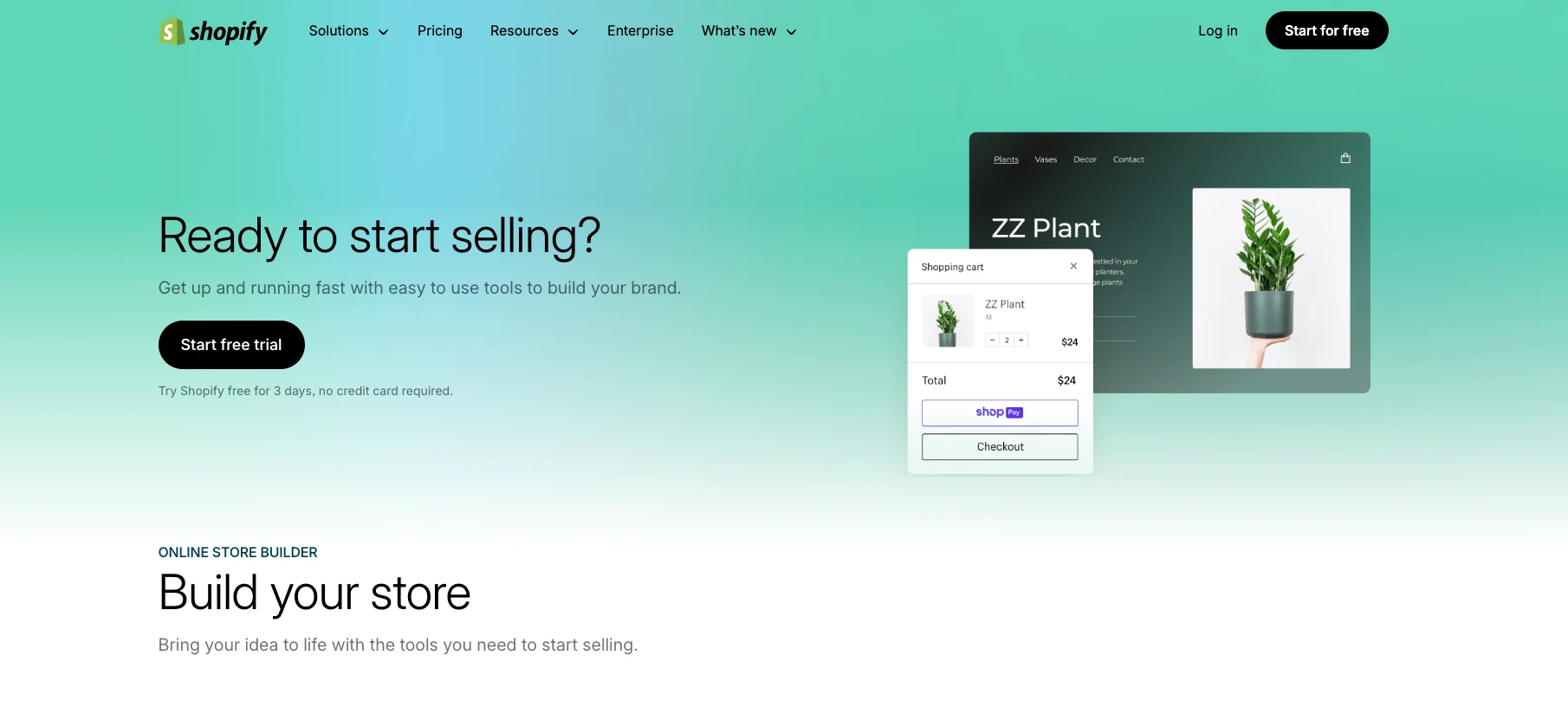
Shopify is one of the most popular hosted ecommerce platforms, 4.82 million live websites currently using this platform. It’s known for its ease of use, making it simple for beginners and experienced sellers alike to launch and grow an online store without needing coding skills. Shopify offers a clean, user-friendly interface and a vast app store packed with tools that help you customize your store, manage inventory, and boost sales.
What really sets Shopify apart is its all-in-one approach. You get hosting, security, payment processing, and 24/7 support all under one roof. Plus, Shopify makes multi-channel selling a breeze, letting you list products on social media, marketplaces, and more. Whether you’re a small startup or a growing business, Shopify scales with you.
Shopify fees:
- Plans start at $5/month for the Starter, $39 for Basic, $105 for Shopify, and $399 for Advanced
- Payment processing fees with Shopify Payments: 2.9% + $0.30 per sale on Basic, 2.6% on Shopify plan, and 2.4% on Advanced
- Extra 1–2% fees apply if you use third-party payment gateways
- Additional costs for apps, premium themes, domain names, and shipping fees
- Annual billing offers up to 25% savings
Notes: These pricing tiers only apply to USA e-sellers. If you are selling in other regions, Shopify may offer you different plans.
Benefits of selling on Shopify:
- Easy setup and use, even if you’re new to ecommerce
- Huge app ecosystem for customization and growth
- Built-in tools for marketing, analytics, and multi-channel selling
Shopify is ideal if you want a reliable, scalable platform with lots of support — perfect for entrepreneurs who want to focus on their business, not tech headaches.
Get to know more about Shopify with LitCommerce through our detailed Shopify reviews. Every pros and cons of selling on Shopify is there!
3. Wix
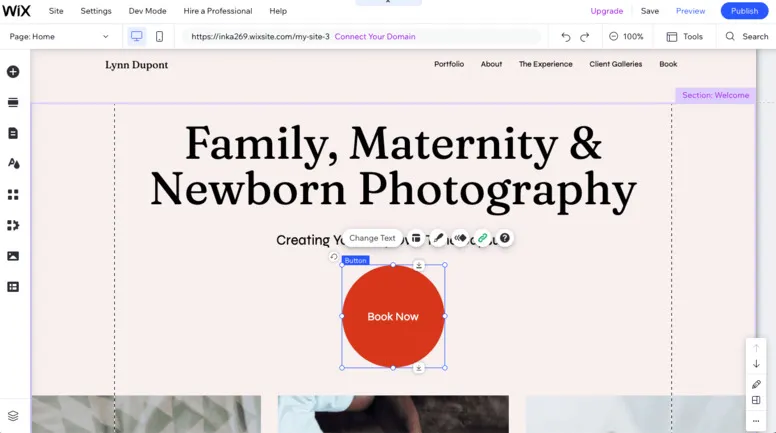
Wix is a popular hosted ecommerce platform known for its drag-and-drop website builder, making it easy for anyone to create a stunning online store without any coding skills. It offers hundreds of customizable templates and flexible design tools, so your store can truly reflect your brand’s personality. Whether you’re selling a handful of products or building a large catalog, Wix adapts to your needs.
Wix stands out with its all-in-one approach — combining website building, hosting, payment processing, and marketing tools in one place. It also supports Wix Payments, which streamlines checkout and integrates smoothly with your store. For sellers who want to get online quickly with a professional-looking site, Wix is a great choice.
Wix fees:
- Plans start at $29/month for Core, $39 for Business, and $159 for Elite
- No platform fees
- Payment processing fees with Wix Payments: 2.9% + $0.30 per transaction in the US, 3.7% for American Express
- Additional costs include premium themes, add-ons, and a $15 chargeback fee
Benefits of selling on Wix:
- Intuitive drag-and-drop site builder with plenty of design freedom
- All-in-one platform including hosting and payment processing
- Suitable for small to medium businesses looking for ease and style
Wix is perfect if you want a beautiful, easy-to-build store with reliable tools to manage sales and grow your online presence.
As functional as Wix can be, the platform still has some challenges. Read more about them in our full Wix reviews right here!
4. Squarespace
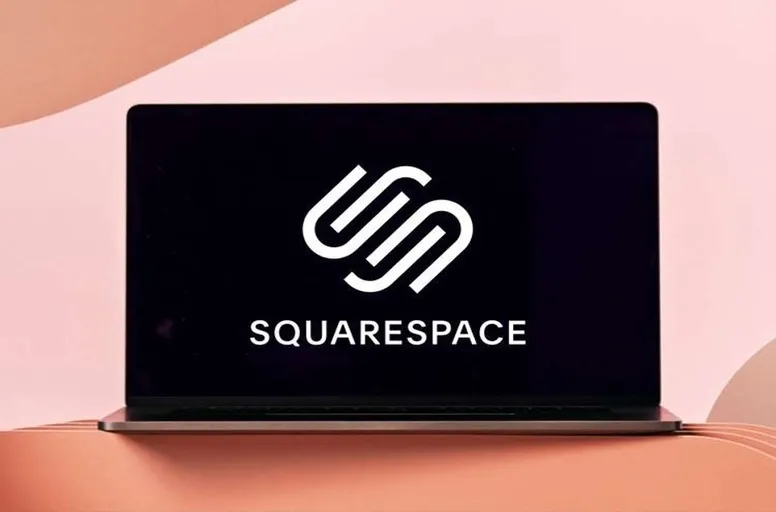
Next on the best selling platforms is Squarespace. You might find more information in our complete Squaresquace analysis.
Squarespace is a hosted ecommerce platform loved for its sleek, modern templates and easy-to-use website builder. It’s especially popular among creative entrepreneurs, artists, and small businesses that want a visually stunning online store without the hassle of coding. Squarespace combines beautiful design with practical ecommerce features, making it simple to showcase products and tell your brand story.
What sets Squarespace apart is its focus on aesthetics and user experience. The platform offers a drag-and-drop editor, built-in hosting, and strong SEO tools, helping sellers attract and convert visitors. It also supports integrated payment processing and marketing features, so you can manage your entire online business in one place.
Squarespace fees:
- Pricing tiers start at $16/month for Basic, $23 for Core, $39 for Plus, and $99 for Advanced (annual billing)
- Basic and Business plans charge a 2%–3% platform fee per sale
- Commerce plans have 0% platform fees
- Payment processing fees range from 2.9% to 2.5% + $0.30 per transaction
- Additional costs may include premium templates and domain renewal fees after the first year
Benefits of selling on Squarespace:
- Very popular to create blog website
- Beautiful, professionally designed templates perfect for creative brands
- Easy-to-use site builder with strong marketing and SEO tools
- Great for small businesses focused on branding and customer experience
Squarespace is ideal if you want a stylish, all-in-one platform that makes your products look as good as they sell.
We’ve just written a topic for Squarespace eCommerce review. Check it out for more details about this hosted solution now!
5. Adobe Commerce (formerly Magento)
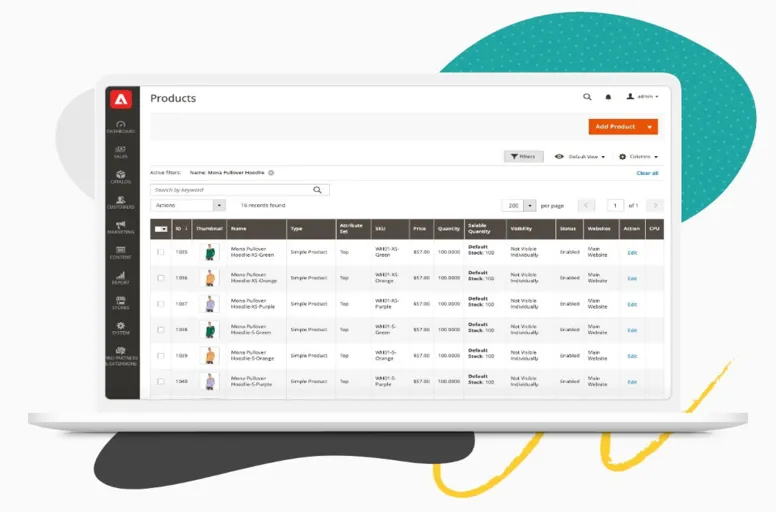
If seeking the best selling platforms for mid to large businesses, you may want to consider Adobe Commerce (so-called Magento)
Adobe Commerce is a powerful open-source ecommerce platform that’s designed for medium to large businesses with complex needs. Known for its flexibility and scalability, it offers an enterprise-level solution that can handle huge product catalogs, multiple stores, and advanced customizations. Whether you opt for the free open-source version or the premium Adobe Commerce Cloud, you get a platform built to grow with your business.
What makes Adobe Commerce stand out is its robustness and depth of features. It supports advanced inventory management, multiple sales channels, personalized shopping experiences, and extensive integrations. However, it requires technical expertise or a dedicated development team to set up and maintain, making it best suited for businesses with the resources to invest in customization and ongoing support.
Adobe Commerce fees:
- Open-source version is free to use
- Adobe Commerce Cloud/Enterprise plans range from $22,000 to $200,000 per year, depending on sales volume
- No platform fees, but payment processing typically costs around 2.9% + $0.30 per transaction via Stripe, PayPal, or similar
- Additional costs include development, hosting ($49–$630/month), support, and premium extensions
Benefits of selling on Adobe Commerce:
- Highly customizable and scalable for large businesses
- Supports complex operations like multiple storefronts and global sales
- Strong integration capabilities and advanced features
Adobe Commerce is ideal for established brands ready to invest in a tailored, enterprise-grade ecommerce solution that can handle high volumes and complex needs.
6. OpenCart

The next recommendation for the best selling platforms is OpenCart, considering open-source solutions.
It is a free, open-source ecommerce platform that gives you the tools to build and manage your own online store — with full control. It’s lightweight, easy to install, and designed for sellers who want flexibility without the complexity of larger enterprise platforms. With a wide range of extensions and themes, you can customize your store to fit your brand and business model.
OpenCart is beginner-friendly compared to some other open-source platforms, but still powerful enough to support multiple stores, languages, and currencies. It has a clean dashboard, basic reporting tools, and supports all major payment gateways. While it’s free to use, you’ll need to manage your own hosting, domain, and any custom development work, which gives you room to grow but may require technical help.
OpenCart fees:
- Free to download and use
- Hosting costs range from $5 to $100/month, domain names typically $10–$15/year
- No platform fees
- Payment processing via Stripe/PayPal: 2.9% + $0.30 per transaction
- Optional costs for premium extensions, themes, or custom development
Benefits of selling on OpenCart:
- Full control over store setup and customization
- Cost-effective for small businesses with a bit of tech confidence
- Multi-store and multi-language support built-in
OpenCart is best for small to mid-sized businesses looking for a low-cost, flexible solution — especially those that don’t mind getting hands-on with setup and maintenance.
7. Big Cartel
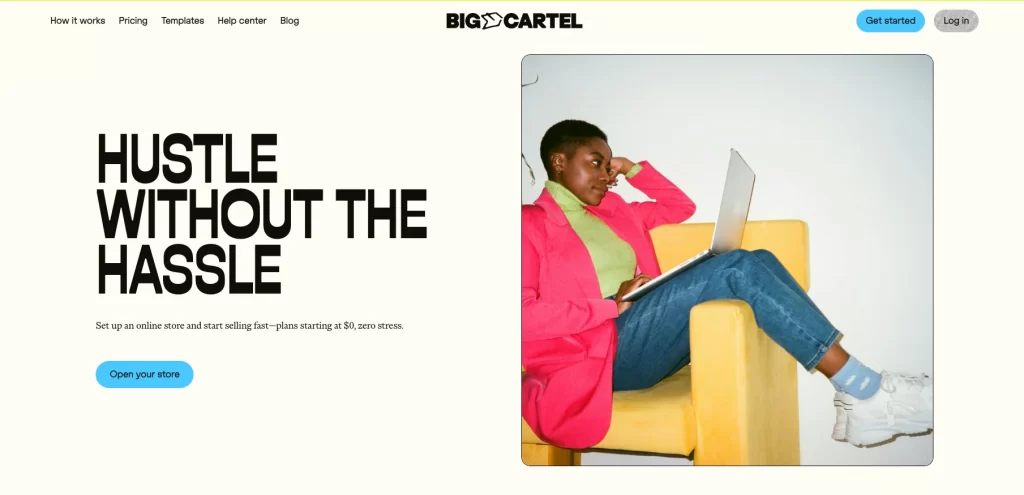
Big Cartel is one of the best selling platforms for independent artists, makers, and creatives looking for a simple way to sell online. It’s built for small sellers who want to launch a store quickly without a steep learning curve. With an intuitive setup and clean design, Big Cartel lets you create a beautiful online storefront — no coding required.
This platform is ideal for those with a limited product range. Whether you’re selling prints, jewelry, or handmade goods, you can easily list and manage products, customize your theme, and connect a custom domain. While it doesn’t have the advanced features of larger platforms, it handles the basics with ease, making it a great starting point for small-scale sellers.
Big Cartel fees:
- Free plan for up to 5 products
- Platinum plan: $15/month (up to 50 products)
- Diamond plan: $30/month (up to 500 products)
- No platform fees
- Payment processing via Stripe/PayPal: 2.9% + $0.30 per transaction
- Optional costs for premium themes, add-ons, and custom domain setup
Benefits of selling on Big Cartel:
- Easy to use and affordable for small sellers
- Ideal for artists and creatives with smaller catalogs
- Clean, minimalist storefronts that highlight your work
Big Cartel is perfect if you’re just starting out or selling a limited range of creative products — especially if you want to keep things simple and budget-friendly.
8. PrestaShop
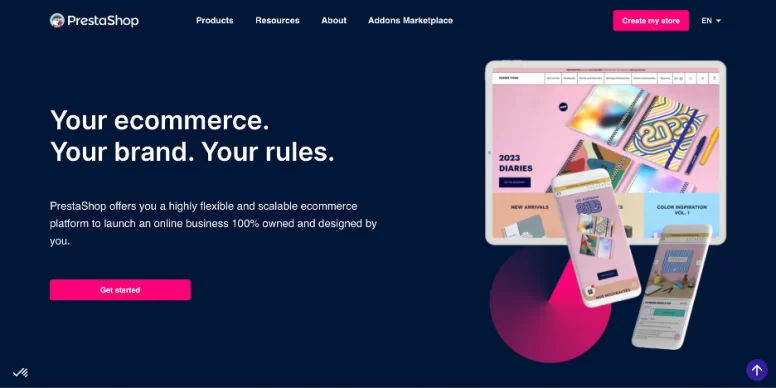
Coming right after Big Cartel, PrestaShop is a flexible, open-source ecommerce solution that’s earned its spot among the best selling platforms for businesses that want freedom to build and grow on their own terms. With thousands of features and modules available, it gives sellers full control over everything from product management to checkout and shipping.
PrestaShop is great for those who want a balance between customization and functionality without starting from scratch. It comes with built-in SEO tools, supports multiple languages and currencies, and works well for international sellers. However, being open-source, it does require some technical knowledge or access to a developer — especially if you want to create a highly customized store.
PrestaShop fees:
- Free to download and use
- Hosting costs can range from $5 to $5,000/month depending on business size and needs
- Domain name: $10–$20/year
- No platform fees
- Payment processing varies by gateway (e.g., PayPal: 2.9% + $0.35; Amazon Pay: 2.9–3.9% + $0.30)
- Additional costs for premium templates, paid modules, and add-ons
Benefits of selling on PrestaShop:
- Powerful features with room to scale
- Strong multilingual and multi-currency support
- Great for international sellers and growing businesses
PrestaShop is one of the best selling platforms for medium-sized businesses that want customization, global reach, and full control — with the flexibility to grow at their own pace.
9. BigCommerce
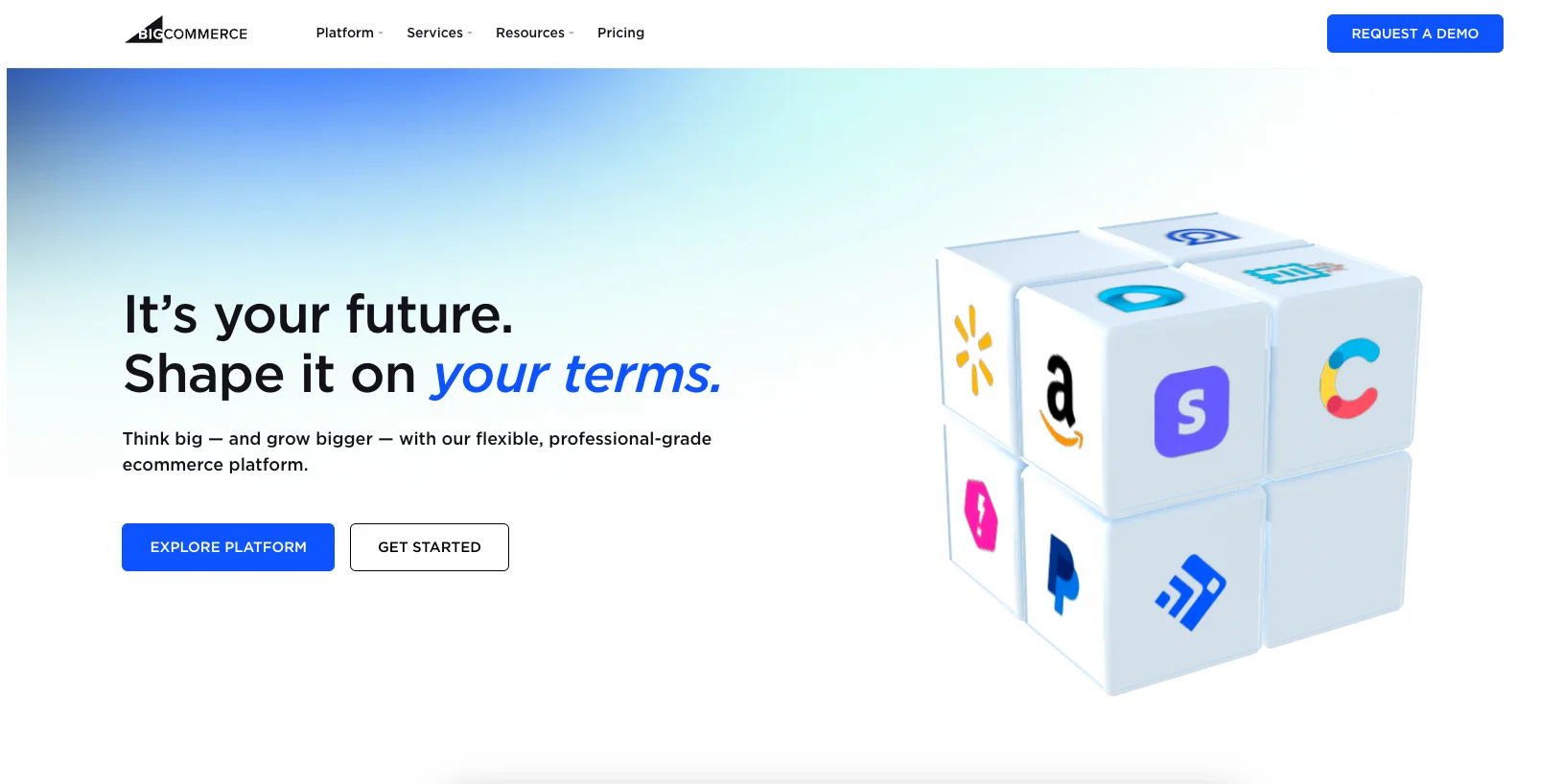
When it comes to the best selling platforms, our list cannot go without BigCommerce, part of the Commerce portfolio. Being a hosted shopping cart solution, BigCommerce provides users with every tool to launch a store. But why is it on this list?
BigCommerce is one of the best selling platforms for growing and enterprise-level businesses that need a robust, scalable ecommerce solution. It’s a fully hosted platform packed with powerful built-in features, making it a great choice for sellers who want flexibility without relying heavily on third-party apps. From multi-channel selling to advanced SEO and product management tools, BigCommerce is built to help your business scale.
What makes BigCommerce stand out is that it doesn’t charge platform transaction fees — no matter which plan you choose. It also supports multiple payment gateways, has native integrations with Amazon, eBay, and social platforms, and offers fast, mobile-optimized themes. It’s especially good for sellers with larger catalogs or complex product setups.
BigCommerce fees:
- Standard: $39/month, Plus: $105/month, Pro: $399/month, Enterprise: Custom pricing
- No platform transaction fees
- Payment processing via PayPal (Braintree): 2.59%–2.89% + $0.29–$0.49 per transaction
- Similar rates for Stripe and Square
- Optional costs for premium themes, extensions, domains
- Save up to 25% with annual billing
Benefits of selling on BigCommerce:
- No additional transaction fees from the platform
- Scales well with growing businesses and complex needs
- Strong multi-channel selling and SEO capabilities
BigCommerce is a top pick for mid-size to large businesses looking for one of the best selling platforms that combines performance, scalability, and serious selling power.
Just in case you are searching for more information about this selling platform, don’t forget to read our latest BigCommerce review!
Methodology: How We Chose the 27 Best Selling Platforms
To bring you the most relevant and up-to-date list of the 27 best selling platforms, we took a detailed, criteria-based approach focused on helping ecommerce sellers — whether just starting out or ready to scale — choose the right sales channels for their goals. Here’s how we did it:
1. Market research & Industry data
We analyzed hundreds of ecommerce platforms and marketplaces using trusted sources, industry reports, seller surveys, and marketplace performance data. This helped us identify which platforms are currently leading in traffic, seller adoption, and transaction volume.
2. Platform diversity & Use case fit
To reflect the different needs of online sellers, we included a mix of:
- Online marketplaces (general, niche, and social commerce)
- Hosted ecommerce platforms
- Open-source ecommerce platforms
Each one was selected for its popularity, growth potential, or unique value to specific types of sellers.
3. Evaluation criteria
Each platform was evaluated across a consistent set of factors, including:
- Ease of use and setup
- Cost and fee transparency
- Audience size and demographics
- Features and seller tools
- Scalability and flexibility
- Fulfillment and payment options
- Niche or market focus
4. Firsthand testing and seller feedback
Whenever possible, we reviewed real seller experiences and tested demo stores to understand how each platform performs in real-world scenarios.
5. Honest, seller-focused presentation
We’ve broken down each platform with clear, consistent summaries — covering fees, features, pros, and considerations — so you can easily compare and decide what fits your business best.
27 Best Selling Platforms to Kick off – FAQs
- 1. Which is the best selling platform?
27 best selling platforms for online merchants:
- Hosted shopping cart solutions: Shopify, Wix, BigCommerce, Squarespace, Big Cartel.
- Open-source eCommerce solutions: WooCommerce, PrestaShop, Adobe Commerce, OpenCart.
- Online marketplaces: Amazon, eBay, Etsy, TikTok Shop, Facebook Marketplace, Google Shopping, Reverb, Walmart, Wish, Shopee, Bonanza, OnBuy, Poshmark, Ruby Lane, Mercari, Wayfair, eBid.
- 2. What are the best selling platforms for small businesses?
The best selling platforms for small businesses are Amazon, eBay, Etsy, Wish, Walmart, TikTok Shop, Bonanza, Ruby Lane, Mercari, Facebook Marketplace, Reverb, Shopify, Wix, Squarespace, Big Cartel, and OpenCart.
- 3. What are the best platforms for dropshipping?
The best platforms for dropshipping are Amazon, Walmart, Shopify, Wayfair, Adobe Commerce, WooCommerce, OpenCart, and BigCommerce.
- 4. I'm an artist, where should I sell with/on?
If you are an artist, consider selling on Etsy, Reverb, Wix, Squarespace, and Big Cartel. All these selling platforms supports the spirit of creativity and uniqueness.
The Bottom Line – Top Selling Platforms Online
Have you figured out the best selling platforms for your business? Choosing the right sales channel surely depends on many factors, such as business scale, core products, target audience, and other resources. From our list of the best selling sites online, hopefully, you have found a perfect fit.
More articles like this are coming on our Retailer Blog to help e-sellers thrive in their businesses, given the scenario of the constantly changing eCommerce industry. Finally, if you have any interest in multichannel selling, don’t hesitate to try LitCommerce’s solution or contact us and discuss it in depth. We’re honored to give a helping hand!

